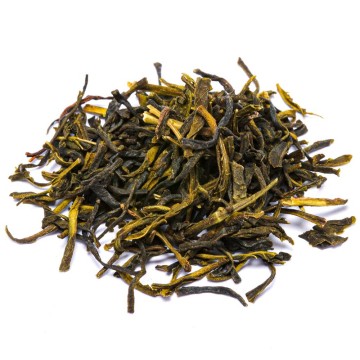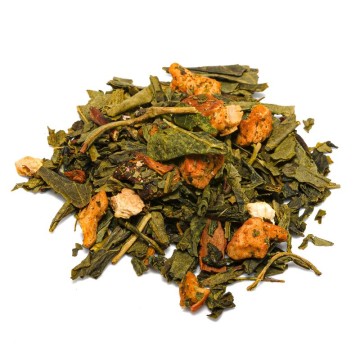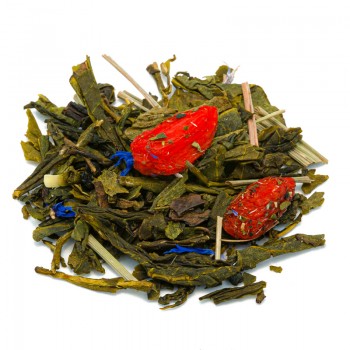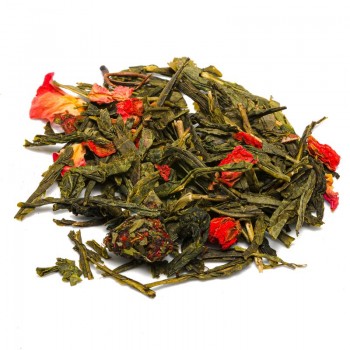Jasmine green tea and jasmine
This unfermented drink is born from the tradition of Chinese tea with jasmine petals. A soft green tea, rich in flavor and with an enveloping aroma, one of the most appreciated in the world. Green tea leaves are the most suitable choice for the preparation of Jasmine tea, as they do not create scents that overwhelm those of the jasmine petals. They tend to take on a floral scent scent, a refreshing and sweet taste.
Properties and benefits
Most tea aficionados are aware of the benefits of this drink, but jasmine green tea adds other virtues, with the combination of tea leaves and jasmine flowers. First of all in the taste, because when you choose not to ferment the leaves, you get teas that retain significant amounts of their original flavor, as in green tea. In addition, the valid nutritional substances are retained, such as the antioxidants useful for fighting free radicals. This tea contains polyphenols, plant chemicals that play the role of antioxidants in the body, reducing the damage caused by aging, pollution, poor diet, etc.
Among the benefits of green tea with jasmine, the combination favors a high concentration of catechins, the polyphenols of the green tea element with beneficial effects for the metabolism and as natural anti-inflammatories. In particular, EGCG catechins also help in the management of blood lipids, and can promote fat burning. The consumption of green tea with jasmine, combined with a correct diet, can stimulate the metabolism thanks to the content of ECGC and caffeine.
In addition, the polyphenols present in green tea with jasmine have been studied for their beneficial action on bad cholesterol (LDL) – they help reduce oxidation, and the formation of harmful plaques on the walls of the arteries. The ingredients of jasmine tea help to improve attention and concentration.
This drink gives energy, without exceeding the amount of caffeine, which remains lower in tea than in coffee. The scent of jasmine tea also helps relax the nervous system. The combination of Jasmine green tea can facilitate the digestive system, counteracting abdominal swelling and promoting diuresis. With regard to beneficial substances, green tea contains more chlorophyll than other types of tea, and makes chlorophyllin available. A substance with purifying and detoxifying properties, which promotes the expulsion of excess toxins and correct digestion. This scented tea helps to limit the fermentation of food during the intestinal process, avoiding bloating and flatulence.
Origins and History of cultivation
Tradition has it that it is produced by infusing green tea leaves with jasmine flowers, to increase its potential for taste, aroma and benefits. This combination starts from the tradition of jasmine tea, one of the most famous scented teas in the world. Widely used in China, since the Ming dynasty (1368-1644), it exploited the diffusion of the jasmine plant and the availability of the petals, present everywhere in the empire.
Jasmine flowers were depicted on fine porcelains, part of ceremonial and cultural rites, in which tea masters enriched traditional tea blends with delicate flowers. For this reason, most jasmine green teas come from China, usually produced with tea leaves (Camellia sinensis) from the Fujian province. The intensely scented jasmine petals came from two types of plant: common jasmine (Jasminum L.) or Arabian jasmine (Jasminum sambac).
The plants are native to the Middle East and Asia, and are now grown in India, Nepal, China, Florida, France and Portugal. Historically, so-called jasmine tea can be prepared using any tea derived from the Camellia sinensis plant as a base. The most beneficial due to its properties, however, is considered to be green tea. In some recipes it contains dried flowers together with the tea leaves, in others only a few petals are used to perfume the green tea, removed before infusion.
In the West, jasmine tea arrived with the expansion of tea in the 19th century, outside of China. The tea leaves reached western shores and soon developed a following of enthusiasts for both green tea and jasmine tea and its blends. Jasmine green tea was renowned in China for the well-being it brought to health.
Plant and flowers
La Camellia sinensis is a species belonging to the flowering plant family Theaceae. Made up of shrubs or small evergreen trees, the plant is used to produce various types of tea (green, black, white, etc.). The plant could reach 9 meters in height, but is generally pruned to about 1.2 meters to facilitate the collection of leaves.
You can make several crops each year, from the first shoots in spring to other crops. The youngest leaves are the richest in nutrients, including chlorophyll and caffeine. Even the processing of the leaves determines more or less the presence of these nutrients. The tea plant can grow in many locations, but prefers milder climates as it is more sensitive to frost. The common jasmine (Jasminum officinale) is a large, sweetly scented, semi-evergreen or deciduous climbing shrub.
The plant can grow rapidly up to 9 metres, preferably in full sun and shelter, on fairly fertile, moist and well drained. In late spring or early summer, it produces a large number of fragrant flowers, about 2 cm wide, on sturdy stems. Flowering continues until the first cold weather. Jasmine flowers are harvested in mid-June and dried. The flower buds are plucked in the middle of the day, when closed to sunlight. They are transferred to the deposits where the tea leaves are, to perfume them.
The process takes place because when the jasmine flowers are subjected to lower temperatures, they reopen and begin to perfume the Camellia leaves – which easily absorb the fragrances of the flowers they come in contact with. When jasmine flowers begin to dry out, they are replaced with fresh new buds, and the scenting process can be repeated up to 10 times. The final drying removes moisture and encloses the flavor of the blend.
Nutritional values of Jasmine and jasmine green tea
Green tea has many beneficial components such as chlorophyll and antioxidant polyphenols – flavonoids and catechins. It releases nutrients with some amount of vitamins (groups A, B1, B2, B6, B12, C and D), minerals (fluorine, calcium, zinc, magnesium and potassium). In addition to tannins and amino acids, including L-theanine (rare molecule), and methylxanthines, alkaloids that include caffeine (theine). The jasmine component contains antioxidants, vitamin C, minerals such as calcium and iron.
How to prepare Jasmine and jasmine green tea
The infusion of green tea and jasmine can be prepared by placing in a cup (250 ml), about 3-5 grams of the mixture of tea and flowers in water at 80° c. Let it steep for 2 to 3 minutes before drinking this green tea. Jasmine tea has a sweet and refreshing taste, but those who wish can add honey or sugar.
Jasmine and jasmine green tea: side effects and contraindications
This combination contains little caffeine, but in any case it is an element that can cause problems for some people. To avoid the side effects of excess caffeine, it is advisable not to exceed the doses of jasmine tea. Side effects include agitation, anxiety, nervousness, nausea, stomach problems and rapid heartbeat.
Jasmine green tea also contains catechins, which may reduce the body's ability to absorb iron from foods. A note that particularly applies to people at risk of iron deficiency. Caution is advised in doses for pregnant and lactating women.

![Green tea Jasmine and jasmine [Natura d'Oriente] Green tea Jasmine and jasmine [Natura d'Oriente]](https://www.naturadoriente.com/3373-large_default/green-tea-jasmine-and-jasmine-.jpg)



![Green tea Jasmine and jasmine [Natura d'Oriente] Green tea Jasmine and jasmine [Natura d'Oriente]](https://www.naturadoriente.com/3373-home_default/green-tea-jasmine-and-jasmine-.jpg)



 No reward points for this product.
No reward points for this product.

![green tea roasted almond [Natura d'Oriente]](https://www.naturadoriente.com/3366-home_default/green-tea-with-roasted-almonds.jpg)







![Green Tea Choui Fong Tea [Natura d'Oriente]](https://www.naturadoriente.com/3379-home_default/green-tea-choui-fong-tea.jpg)



![green tea hemp mango [Natura d'Oriente]](https://www.naturadoriente.com/3381-home_default/green-tea-mango.jpg)

